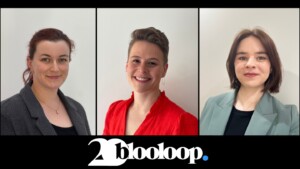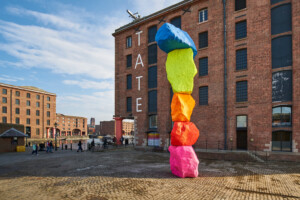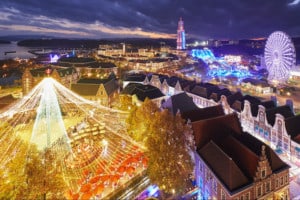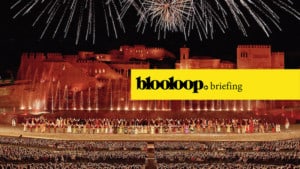As a technical designer and consultant, it’s extremely useful to me to know about things that are in the pipeline, even if the cool new stuff hasn’t yet been field-tested, because we’re designing facilities two and three years out. That taste of a product that may not be fully deliverable today but will be in the future, especially from a company that we trust, lets us plan for our clients. That’s what I had in mind when I walked the floor today, and here are some impressions.
Desperately seeking 16:10 aspect ratio
InfoComm 09 saw the premiere of Evans & Sutherland’s new AK digital laser video display. It is a flatscreen version of the company’s dome laser system featured at the Samuel Oschin Planetarium in Griffith Observatory. In general I have been critical of today’s much-hyped digital cinema systems and like the presentation nerd that I am, went up and stuck my face into the screen. I was pleasantly surprised: Although it wasn’t as bright as I thought it could be, there was no dot-matrix or screen-door effect. Even just a foot away from the screen, I couldn’t see the projection process (although I could see the remnants of the screen, which appeared to be silvered.) More dynamic imagery would show it off better, and some computer graphics.
By and large, projector manufacturers are missing a very obvious bet. Our laptops are widescreen now and have been for a few years… so why, why, why are they still coming out with 4:3 ratio products (Sanyo, for example) when widescreen ratios are 16:9 or 16:10???? One of the few manufacturers that gets it is the company simply named “projection design” (they like it all lower case) – whose projectors, with the exception of 3D models, all had the widescreen aspect ratio. To Canon’s credit, they also had projectors with the widescreen ratio as well as the historical 4:3 format. Canon’s LCOS (liquid crystal on silicon) created a great image and in their side-by-side test display, comparing the company’s LCOS and LCD projectors, the LCOS color appeared to be more realistic. DLP’s new 3D chip looks promising for entertainment, gaming and product development applications. Their no-lamp (LED) light source projection engine also seems viable. It will be interesting to follow LED projection engines for brightness and color saturation.
Bob Schluter, president and chief engineer of Middle Atlantic Products subsidiary ExactPower, showed off the company’s new power distribution system. I found it to be a well-engineered product from a great engineer who listens to and understands the needs of the AV industry.
Audio: A dearth of demos
There were some new configurations and flavors in audio DSP (digital signal processing) boxes, and everybody seemed to be hawking a steerable line array, but we didn’t find anything really new in the audio department. Unfortunately the presentations in the audio demonstration rooms were not up to the caliber of displays at past NSCA shows – in spite of there being so much total floor space, there were not enough dedicated rooms to provide the quantity and length of audio demos that would truly serve attendees. Now that NSCA and InfoComm are joined at the hip, InfoComm needs to learn from what NSCA and AES have done in the past. During a recession, a trade show organizer can command a lot of square footage for its money, and InfoComm’s total floor area was quite generous with a lot of it unused. I would like to have seen it allocated differently. There could have been more audio demo rooms and the floor could easily and painlessly have been compressed by incorporating the lighting pavilion and eliminating some of the many lounge areas.
Video vapors
InfoComm’s video conferencing pavilion has grown quite a bit but alas, a good chunk of that growth is vendors pushing prefabricated or pre-engineered non-solutions that fail to achieve the core goal of good video conferencing design: eye-to-eye contact. Three cameras and three displays don’t automatically make it better. First and foremost, your system must get the camera and display set up for a face-to-face meeting. Some 10 years ago, at TiLE in London, we were treated to the introduction of a reflective Pepper’s Ghost type conferencing display that presented life-sized, full body images floating in space from the far end, and more such systems were in good supply on the InfoComm floor this year. One exhibitor went so far as to speak of having patented the process, but when questioned further retreated to say they’d only patented the element of using a Mylar screen. While the process may have improved in such things as image resolution, it still fails to deliver a good communication experience and belongs more in the realm of entertainment than in the boardroom. The venerable Pepper’s Ghost illusion has been successfully adapted for theme park attractions and museum exhibits, but it is awkward here.
Missing the Dopplers
As president of the Themed Entertainment Association (TEA) I am pleased to note the following TEA members were exhibiting at InfoComm (advance apologies to anyone who I may have inadvertently left out – I tried to crosscheck but may have missed someone): Alcorn McBride, Community Professional Loudspeakers, Electronic Theater Controls (ETC), Electrosonic, Evans & Sutherland, Gilderfluke, Martin Professional, Medialon, Middle Atlantic Products, and Tannoy. While wandering the floor, I even ran into Steve Birket of Birket Engineering, TEA’s Eastern Division President; could he be checking out the lighting pavilion?
It was hot in Orlando, but the trip to InfoComm is always worthwhile. We caught up with old friends and made some new ones, and we found some cool stuff. Surprisingly absent from the floor, however, were the Doppler projection systems. [Editor’s note: satire ahead!] These are a promising new advance still in the prototype stage, developed by a few enterprising and imaginative industry members. After numerous conversations with students who were concerned about crossing projection beams of cross-firing displays, these innovators began experimenting with two projectors and offsetting them front to back. They discovered that this unique (and somewhat counterintuitive) setup has, under certain circumstances, the ability to transmit the projected image to the screen before it ever leaves the projector – hence the name Doppler projection. This has numerous advantages, including significant energy savings. Since the image arrives before it has left, no light is required, therefore no lamp is needed, and no power. Once perfected, it will in fact be the ultimate Green projection system. So who will be the first to have a working unit ready for next year’s show? InfoComm will return to Las Vegas in 2010, June 9-11. See you there.
Technology for Entertainment, Education and Business: Steve Thorburn Reports from InfoComm 09
Audiovisual and Acoustics Engineering: Steve Thorburn Reports from InfoComm
The Business of Audiovisual Technology: Steve Thorburn’s InfoComm diary, day three








